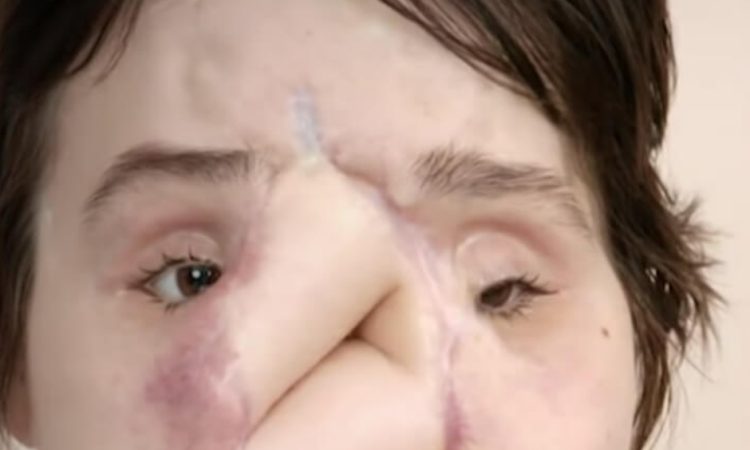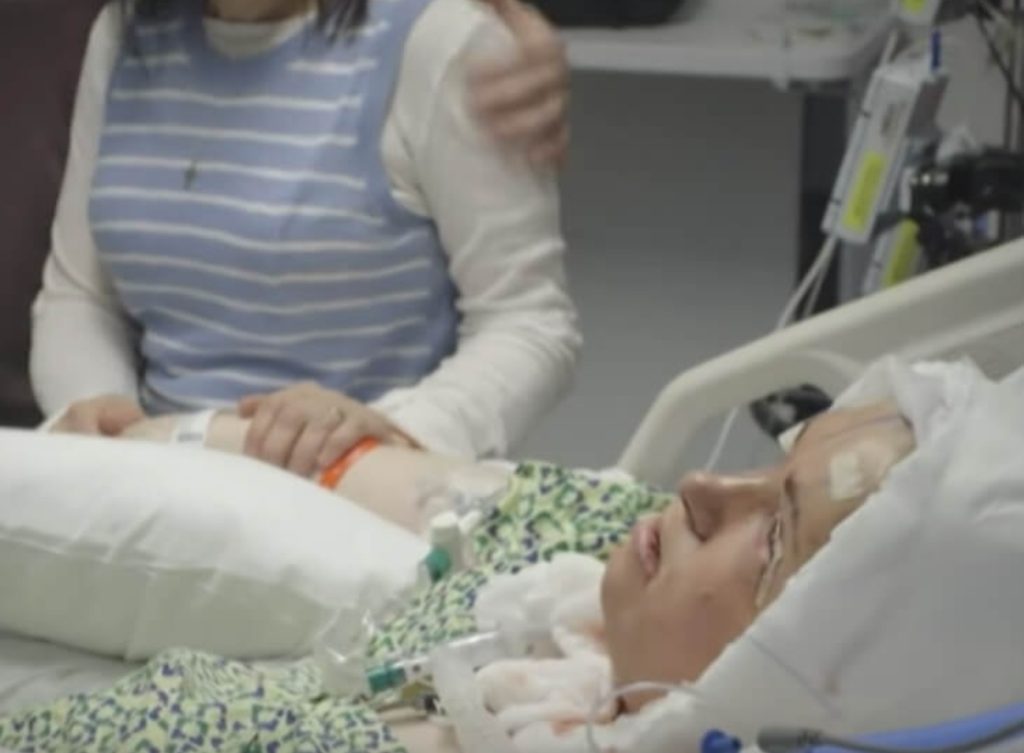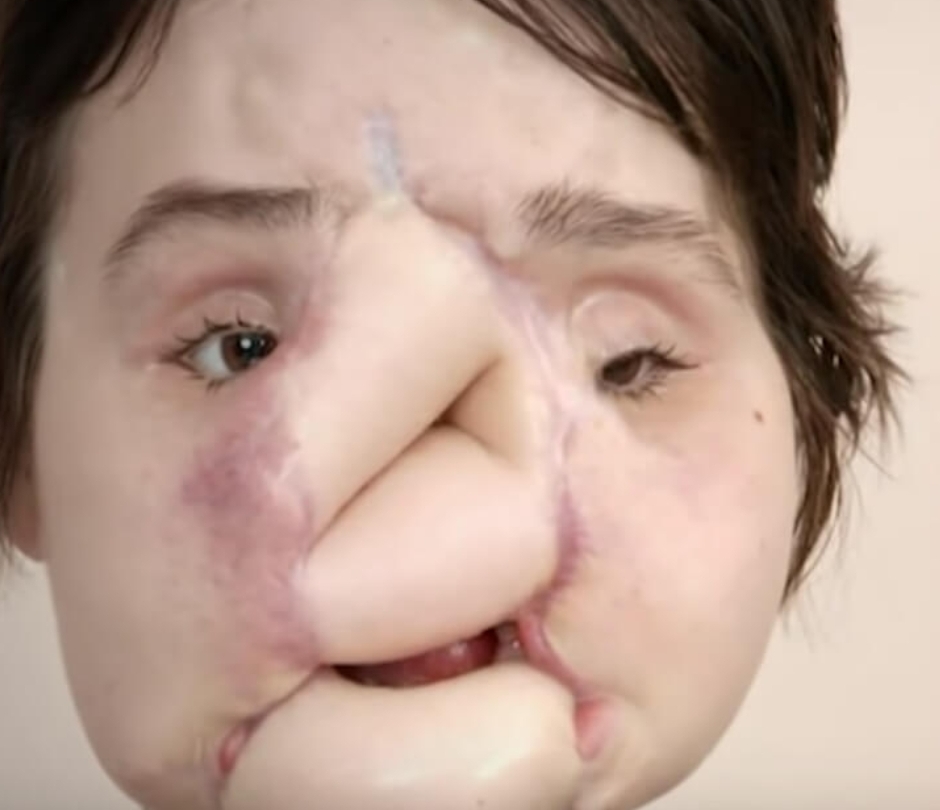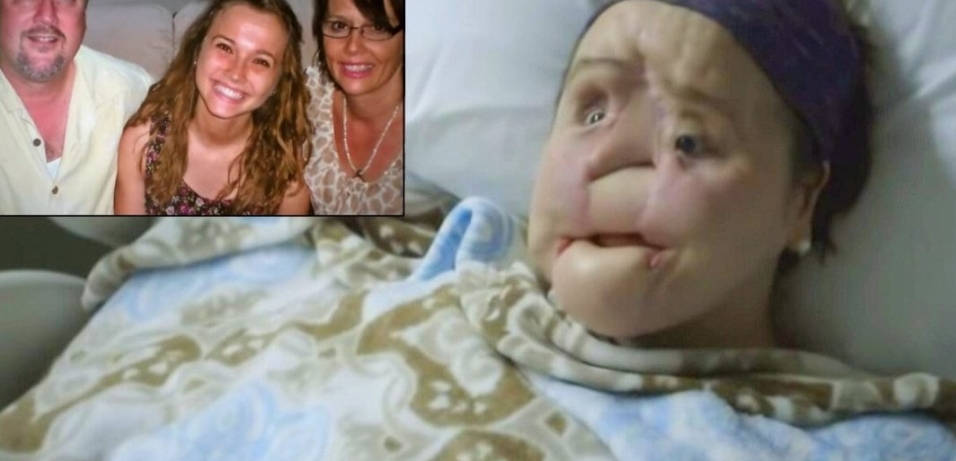How a Lady With Gastrointestinal Problems Wanted To Shoot Herself Because Of Her Look, However She Undergo Surgery And The Miracle Took Place (Video)

‘I had no clue what a face transplant was’
In the days prior to Katie’s suicide attempt, she faced a number of emotional hurdles.
She underwent surgery for chronic gastrointestinal problems, and she faced betrayal in a personal relationship. Around that time, Katie’s mother, Alesia, was abruptly fired from a teaching job at Katie’s school because Alesia “questioned several decisions that were made lacking integrity,” Katie’s father, Robb, told CNN.
According to Dr Brian Gastman, who worked at Cleveland Clinic (the hospital that saved Katie’s life), the girl’s case was one of the worst face traumas he had ever come across.
The girl’s chances of survival were grim – with her brain exposed to the elements, she could die of infections or seizures

On March 25, 2014, when Katie was 18, her older brother, Robert Stubblefield, heard the gunfire and found her after she harmed herself in a bathroom at his home in Mississippi.
He was devastated.
Katie doesn’t remember that tragic day when she lost her face. She has said that she doesn’t remember much of that year – including being hospitalized in Oxford, Mississippi; being flown to another hospital in Memphis, Tennessee; and then being transferred to Cleveland Clinic in Ohio, where she would undergo her face transplantation three years later.

It was in Memphis where Katie’s parents, Robb and Alesia, heard the term “face transplant” for the first time.
“There was an older trauma surgeon who basically told us, ‘It’s the worst wound that I’ve ever seen of its kind,’ and he said, ‘The only thing I can think of that would really give her functional life again is a face transplant,’ ” Robb said.
“I was standing there thinking, ‘What do you mean, a face transfer? What do you do?’ “

When Katie was later told about the possible procedure, she said, she was equally stunned.
“I had no clue what a face transplant was,” Katie said. “When my parents helped explain everything to me, I was very excited to get a face again and to have function again.
Full and partial face transplants are medical procedures that involve replacing all or parts of a person’s face with donated tissue, including skin, bone, nerves and blood vessels from a deceased donor.
Katie’s procedure involved transplanting the scalp, forehead, upper and lower eyelids, eye sockets, nose, upper cheeks, upper jaw and half of lower jaw, upper teeth, lower teeth, partial facial nerves, muscles and skin – effectively replacing her full facial tissue, according to Cleveland Clinic.
Similar to Katie, the first recipient of a face transplant in the United States was a woman who survived a gunshot wound to the head. That patient, Connie Culp, underwent a 22-hour transplant surgery at Cleveland Clinic and debuted her new face in 2009.
That was a near-total face transplant. The world’s first successful full face transplant was conducted at Vall d’Hebron University Hospital in Barcelona, Spain, in 2010.
As for where Katie fits in, “only 40 people in the world have ever had a face transplant, and we believe that she is the 39th person,” said Susan Goldberg, editor-in-chief of National Geographic magazine.
“We think her story is one of the most important stories that we will do this year,” Goldberg said of the magazine. “We thought it was just such a moving and inspiring story that is about everything from human journey to breakthrough medicine and science
You take it for granted, the different components of our faces’
Before Katie’s face transplantation, surgeons at Cleveland Clinic used 3D printing to help reconstruct about 90% of her lower jaw, said Dr. Brian Gastman, a plastic surgeon at Cleveland Clinic who led Katie’s surgery and oversaw her care.
The surgical team used CT scans of the jaw of Katie’s older sister, Olivia McCay, to 3D-print a model template for the reconstruction.
“We made a plate designed for the combination of Katie and her sister’s jaw, and that’s what we used to make Katie’s jaw before we did the transplant,” Gastman said.
He noted that when he first saw Katie’s injury, he worried that she might not live
In March 2016, Katie was placed on the waiting list for a face transplant. Fourteen months later, a donor was found: Adrea Schneider, a 31-year-old woman who died of a drug overdose, National Geographic reported. Before the procedure, Katie underwent extensive psychological evaluation as a face transplant candidate and suicide survivor.
After she was cleared to receive her new face, the 31-hour surgery began May 4, 2017. It involved 11 surgeons, several other specialists and virtual reality. The surgery was completed the next day.
“I am able to touch my face now, and it feels amazing,” said Katie, who still has some difficulty speaking clearly.
Her father, Robb, translated some of her sentiments: “You take it for granted, the different components of our faces – the bone, the tissue, the muscle, everything – but when it’s gone, you recognize the big need. Then when you receive a transplant, you’re so thankful.”




